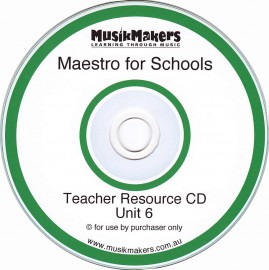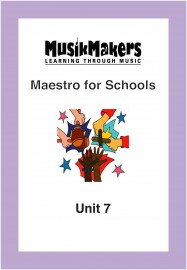Features of the Maestro program:
- a one or two year program.
- lessons are one hour in length.
- maximum of 12 children in a class.
- parents/carers are invited to join the class for the last 10 to 15 minutes of each lesson.
- home activity sheets are provided so that children can participate in musical activities with parents during the week between lessons.
- classes are run in blocks of 8 or 9 weeks during school terms.
- any child can join a Maestro class, completion of the Explorer program is not a pre-requisite.
- older children can join the second year of the program without having undertaken the first year.
- each child receives a package containing materials to be used in class and at home including:
- a strong vinyl carry bag to hold all materials.
- a CD of the songs and music learned in the lessons.
- a set of high quality chime bars in a strong carry case.
- worksheets with weekly home activities and a folder for storing the sheets.
- a weekly explanation card containing information for parents.
- consumable materials for the creation of simple instruments.
What will your child do in a Maestro Class?
Songs, movement, chime bar activities, dance, drama, games and use of tuned and untuned percussion instruments will enable the children to develop an understanding of musical concepts such as:
|
 |
Children will be introduced to some of the world's great composers and their music. They will be encouraged to make and play their own simple compositions.
Emphasis is placed on ensemble work and the creation and performance of simple patterns to accompany a song or story.
Using materials provided, children make, decorate and play their own simple instruments as they are introduced to the groups of instruments in an orchestra.
Most children of this age are not developmentally ready to learn music notation, so pictorial and graphic notation are used. This helps them to develop a sense of high and low, left to right eye coordination and to see the melodic shape of the short songs. During the second year of Maestro, children are introduced to pre-notation, which is where most beginners books for learning and instrument begin.







